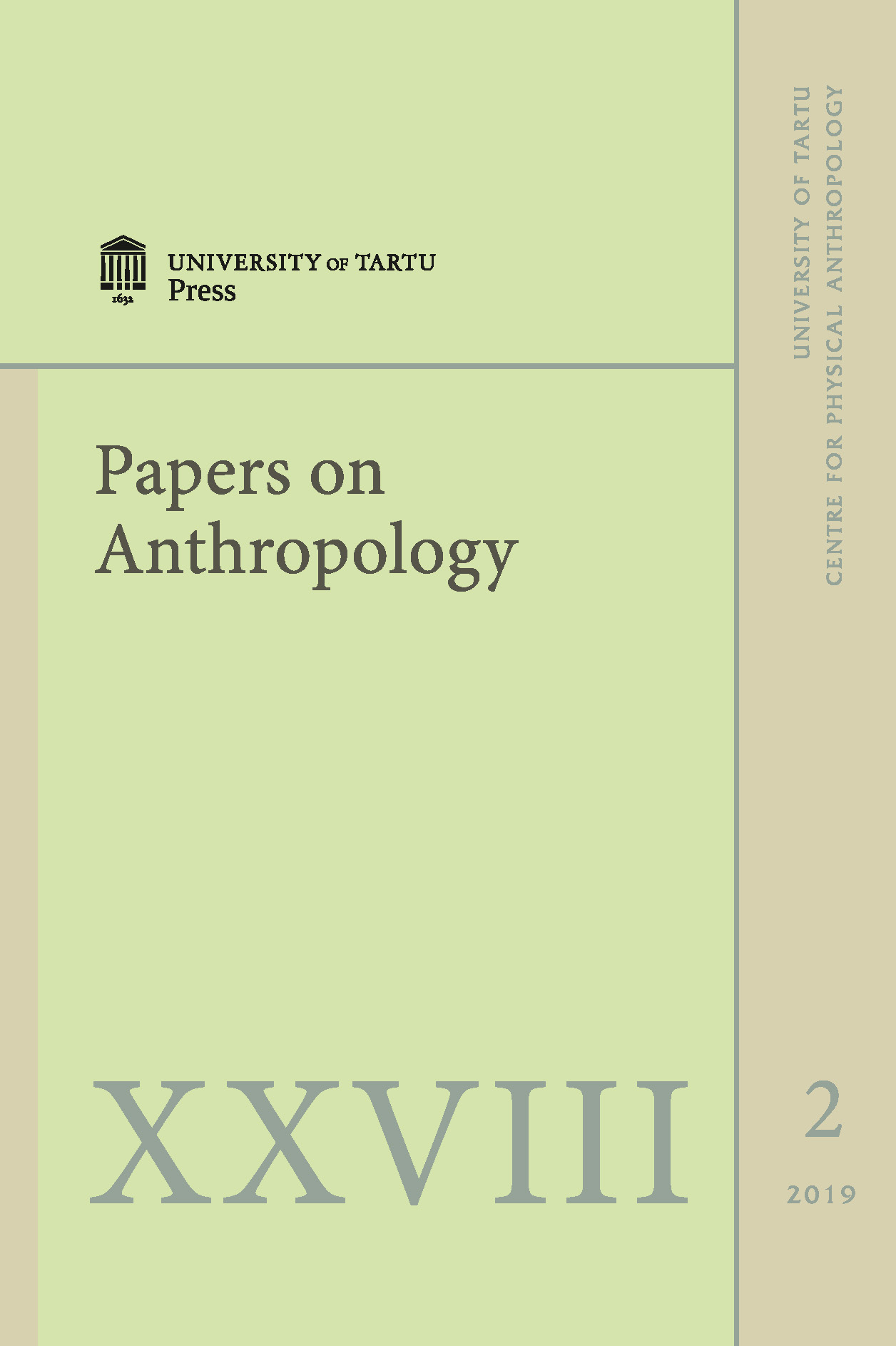On anthropometric data of the male student candidates of the Institute of Sport Sciences and Physiotherapy at the University of Tartu in 2017
DOI:
https://doi.org/10.12697/poa.2019.28.2.05Keywords:
anthropometry, height, weight, ideal weight, indicesAbstract
The purpose of this study was to investigate some anthropometric variables of student candidates of the Institute of Sport Sciences and Physiotherapy, Faculty of Medicine, University of Tartu in 2017. All anthropometric measurements were made according to the recommendations of R. Martin [7].
Comparison of the height and weight data of the studied subjects with the height and weight norms of Estonia provided by Kaarma et al. [9] revealed that the entrants were taller in height but with the same average weight.
In our study, the somatotypes recommended by Kaarma et al. [9] were used for the first time on entrants to the university. Our study found that male student candidates’ body somatotypes were divided into SD classes as follows: small 8.6%, medium 22.9%, large 18.6%; subtypes of pycnomorphic somatotypes: 7.1% in class I, 1.4% in class II, and 8.6% in class III; leptomorphic somatotypes were divided: 11.4% in class I, none in class II and 31.4% in class III.
Based on the recommendations of several authors, we calculated the ideal body weight for all the entrants enrolled in the study.
Comparison of the average body weight of entrants with the average weight calculated using the ideal weight method revealed an interesting situation. Namely, the mean values calculated using the Devine (1974) formula did not differ statistically significantly from the mean of the measured weights (t=0.101, p> 0.05). Neither did Devine’s (1974) ideal weight and BMI, Rohrer’s index and ponderal index calculated from it, and the body surface calculated according to the formulas of Dubois and Dubois and Mosteller differ from the actual figures.

